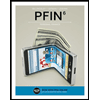
Case summary: Ms. J has been undergoing a severe career crisis with the loss of her position as a professional engineer due to the loss of government contracts. As a result, she has to take up a position in the marketing department which seems to be completely out of her desired career path. The job pays more but requires considerable amount of travel. Ms. J wants to make a decision between taking up the new job and making it a personal commitment and to do it for a period of one year or else seeking a new engineering job in the same company or in a different company.
Characters in the case : Ms. J
Adequate information: The individual has two options left, to take up the new job and make it a personal commitment and do it for a period of one year or else seek a new engineering job in the same company or in a different company.
To determine: The way to decide on different career plans.
Want to see the full answer?
Check out a sample textbook solution
Chapter 2 Solutions
PERSONAL FINANCE,TAX UPDATE (LL)
- Beta Company Ltd issued 10% perpetual debt of Rs. 1,00,000. The company's tax rate is 50%. Determine the cost of capital (before tax as well as after tax) assuming the debt is issued at 10 percent premium. helparrow_forwardFinance subject qn solve.arrow_forwardPlease help with questionsarrow_forward
 PFIN (with PFIN Online, 1 term (6 months) Printed...FinanceISBN:9781337117005Author:Randall Billingsley, Lawrence J. Gitman, Michael D. JoehnkPublisher:Cengage Learning
PFIN (with PFIN Online, 1 term (6 months) Printed...FinanceISBN:9781337117005Author:Randall Billingsley, Lawrence J. Gitman, Michael D. JoehnkPublisher:Cengage Learning- Principles of Accounting Volume 2AccountingISBN:9781947172609Author:OpenStaxPublisher:OpenStax College
 Cornerstones of Cost Management (Cornerstones Ser...AccountingISBN:9781305970663Author:Don R. Hansen, Maryanne M. MowenPublisher:Cengage Learning
Cornerstones of Cost Management (Cornerstones Ser...AccountingISBN:9781305970663Author:Don R. Hansen, Maryanne M. MowenPublisher:Cengage Learning





